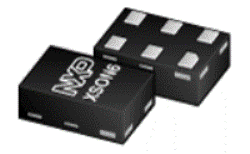NXP Semiconductors has declared the development of SiGe:C less noise amplifiers (LNAs) to enhance the noise figure, linearity and reception of signals from the GPS systems such as Galileo and GloNass. The company’s SiGe:C LNAs offers reduced footprint in the market.
 NXP Semiconductors’ BGU8007 model SiGe:C low-noise amplifier
NXP Semiconductors’ BGU8007 model SiGe:C low-noise amplifier
The NXP BGU700x LNAs will suppress the Bluetooth, mobile and WLAN transmit signals and ensures superior reception of weak GPS signals providing improved jam conditions of about 10 dB or under -40 to -20 dBm with the noise level less than 1dB. Since the NXP LNAs is integrated with only two external components, it can save 50% of PCB size and reduce the component expenses.
The power level of GPS signals is not strong enough and its noise figure is less than 155dBm. The strong transmitters including WLAN, cellular and Bluetooth integrated in many of the consumer devices including personal navigation systems and electric cars and will drive the GPS amplifiers into compression, which results in poor reception of the GPS signals. When the transmitters compress the GPS amplifiers, it will produce the intermodulation products and harmonics from the transmitter signals that will overpower the weak GPS signals resulting in GPS reception loss.
The NXP BGU8007/BGU700x models of LNAs compensate the output power from jammers, which is detected using an adaptive biasing, by temporarily raising the current, thereby maintaining the optimal reception of the GPS signal until it is possible. The NXP BGU700x/BGU8007 models LNA are integrated with a single input matching inductor and supply decoupling capacitor for completing its compact design. The BGU7005 series LNA is developed in a compact 6-pin package of about 1.45 x 1 mm with 4.53 mm2 application span, which is 50% smaller than that having application area of about 9.06 mm2. These SiGe:C LNAs will ensure the footprint reduction, less expenses and improved GPS signal reception in devices using a patch or an active antenna.
Source: http://www.nxp.com